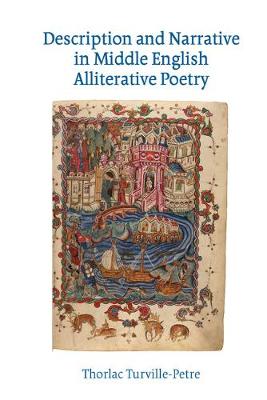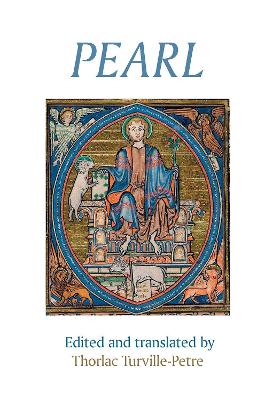Exeter Medieval Texts and Studies
2 total works
Description and Narrative in Middle English Alliterative Poetry
by Thorlac Turville-Petre
Published 21 September 2018
The characteristic alliterative poem of the 14th and 15th centuries tells a story of incident and adventure: it is pre-eminently the poetry of narrative. Yet it is also, more than any other kind of medieval verse, remarkable for passages of vivid description, taking advantage of the extraordinary rich verbal resources of the alliterative poets and the characteristic strengths of the alliterative line. Memorable examples are the green chapel in Sir Gawain and the Green Knight, the storm at sea in Patience, the dream-landscape in Pearl, and the mysterious tomb in St Erkenwald; there are violent battle-scenes, descriptions of hunting and hawking, beautiful meadows and terrifying mountains, purling streams and wild rivers. Here is a seeming contradiction, or at least a tension that needs to be explored. The descriptive passages are digressions that interrupt the narrative; the story must pause to take in a visual effect. In Description and Narrative in Middle English Alliterative Poetry, Thorlac Turville-Petre explores this relationship between description and narrative, and the contribution of description to the narrative. Passages from all the major alliterative poems are analysed, and translated as necessary, so that the book may meet the needs of students as well as scholars familiar with the language and the topics discussed.
Pearl is a moving elegy written in the late fourteenth century, in which a grief-stricken narrator struggles to come to terms with the death of his baby daughter. He meets her, now transformed into a beautiful young lady, in a dream, where she attempts to bring him to understand the place of death in the divine plan, and where he is granted a sight of the heavenly Jerusalem. Pearl is celebrated as a jewel among medieval poems, although it is the most challenging of the four works by the anonymous author of Sir Gawain and the Green Knight.
This new critical edition is designed to offer the maximum support for the reader of the poem. The text is accompanied by a close translation, and each of the twenty sections of the poem is provided with an introductory headnote as well as a running commentary. A general introduction supplies the necessary background information, on manuscript and authorship, form and structure, sources and influences, style, vocabulary and verse-form. The bibliography selects the most significant of the extensive critical studies. Written for both the specialist and the general reader, this book is an essential guide to this profound and complex poem. Designed as a replacement for E. V. Gordon's standard edition of 1953 this is the only edition of Pearl to be accompanied by a literal translation and a full literary commentary and is the fruit of the author's 40 years of teaching medieval literature.
This new critical edition is designed to offer the maximum support for the reader of the poem. The text is accompanied by a close translation, and each of the twenty sections of the poem is provided with an introductory headnote as well as a running commentary. A general introduction supplies the necessary background information, on manuscript and authorship, form and structure, sources and influences, style, vocabulary and verse-form. The bibliography selects the most significant of the extensive critical studies. Written for both the specialist and the general reader, this book is an essential guide to this profound and complex poem. Designed as a replacement for E. V. Gordon's standard edition of 1953 this is the only edition of Pearl to be accompanied by a literal translation and a full literary commentary and is the fruit of the author's 40 years of teaching medieval literature.

